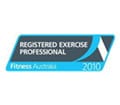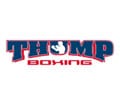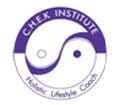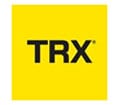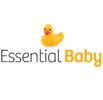Muscle testing, also known as Applied Kinesiology, is a fascinating and often underutilized tool in holistic health.
It gives a window into the body’s internal systems, offering clues about imbalances, sensitivities, and areas in need of support.
Whether you are testing food intolerances, emotional stressors, or supplement compatibility, muscle testing can be a powerful guide on your health journey.
What Is Muscle Testing (Applied Kinesiology)?
Muscle testing is a form of biofeedback used to evaluate the body’s responses to various stimuli.
Practitioners apply light pressure to a muscle group while the client resists.
The ease or difficulty of this resistance can indicate energetic imbalances, sensitivities, or misalignments.
At its core, muscle testing is based on the principle that the body will weaken when exposed to something that causes stress or disharmony.
Conversely, a strong muscle response indicates alignment or compatibility.
First developed in the 1960s by chiropractor Dr. George Goodheart, muscle testing has since been embraced by many natural and holistic health practitioners, including chiropractors, naturopaths, and holistic personal trainers.
The Science Behind Muscle Testing
While muscle testing has its critics due to limited clinical standardization, emerging research provides intriguing support for its efficacy.
The technique relies on the neuromuscular feedback loop, our nervous system’s way of communicating information through muscular resistance or weakness.
Here is some of the supporting research:
- Monti, D. A., et al. (1999). “Muscle Testing as a Window into the Mind.” Perceptual and Motor Skills.
- Schmitt, W. H. & Leisman, G. (1998). “Correlations of Applied Kinesiology Muscle Testing Findings with Serum Immunoglobulin Levels.” International Journal of Neuroscience.
- Motyka, T. M., & Yanuck, S. F. (1999). “Manual muscle testing: A functional neurological approach.” Chiropractic Technique.
These studies support the idea that changes in muscular response are not random, but can reflect physiological and psychological states.
Benefits of Muscle Testing
-Non-Invasive: No needles or machines needed, making it accessible and stress-free.
-Immediate Feedback: Allows real-time responses from the body, enabling instant decisions on food, supplements, or practices.
-Personalised Approach: Results are unique to the individual, helping to tailor wellness programs to specific needs.
-Versatile: Can be used in a wide range of scenarios—from nutritional testing to emotional wellbeing and fitness alignment.
-Safe and Gentle: Especially useful for individuals who are sensitive, recovering, or prefer natural methods of health insight.
How Muscle Testing Works
The basic principle is simple:
1.A muscle is isolated (commonly in the arm or hand).
2.The practitioner applies light pressure.
3.The client resists.
4.A strong response indicates a “yes” or healthy alignment; a weak response indicates “no” or imbalance.
It can be used to assess anything from supplements to foods, to emotional stressors or even environmental triggers.
Duck’s Beak Technique
This is a self-testing method often used by individuals for its ease and subtlety. Here is are the instructions:
1.Form your hand like a duck’s beak—bring your index and middle fingers together, like a pinch.
2.Press these fingers against an object or against the fingers of your other hand.
3.Ask a question or focus on a stimulus (e.g., hold a supplement).
4.Apply gentle pressure with your opposite hand to try and open the beak.
5.A strong resistance = “yes” or compatible. A weak break = “no” or incompatible.
This method is useful for clients with limited arm strength or those doing solo testing.
O-Ring Technique
Another popular self-testing method, the O-Ring method is both subtle and effective. Here is are the instructions:
1.Touch your thumb and index finger together to form a ring.
2.Use the opposite hand’s fingers to try to pull apart the ring.
3.Focus on a substance or question (e.g., “Is this food good for me?”).
4.Strong ring = “yes” or beneficial; ring breaks = “no” or disharmony.
This method is ideal for quick testing of foods, supplements, or even intentions.
Limitations and Considerations
-Practitioner Bias: Technique must be performed carefully and neutrally.
-Hydration and Stress: These can affect muscle response.
-Not a Diagnostic Tool: Should be used as a complementary method, not in place of medical diagnosis.
-Subjectivity: Muscle testing is interpretive and may vary from person to person.
Conclusion
Muscle testing is a unique and powerful tool that taps into the body’s internal intelligence.
While it’s not a diagnostic or standalone treatment, it can be a guiding force for better decisions in food, lifestyle, and wellness.
By listening to your body’s subtle signals, you begin to unlock a deeper level of personal health and transformation.
Why not give it a try and see what your body has to say?
Cameron Corish has been caring and achieving results for the local Wishart, Mansfield and Mt Gravatt community for over 15 years. He takes a multi-disciplined and holistic approach to health and fitness addressing the physical, mental and emotional aspects of one’s health.
Ready to feel and look your best? Book a time for a FREE chat and see how we can make a difference in your life.
If you are not ready yet, come and join our community of health, fitness and wellness enthusiasts with our latest updates. When subscribing to our newsletter you will receive 3 welcome gifts!!
Research References
- Monti, D. A., et al. (1999). “Muscle Testing as a Window into the Mind.” Perceptual and Motor Skills.
- Schmitt, W. H., & Leisman, G. (1998). “Correlation of Applied Kinesiology Muscle Testing Findings with Serum Immunoglobulins.” International Journal of Neuroscience.
- Motyka, T. M., & Yanuck, S. F. (1999). “Manual muscle testing: A functional neurological approach.” Chiropractic Technique.
- Schwartz, G. E., et al. (1987). “Applied kinesiology: Muscle testing for allergy and infection.” Behavioral Medicine.


